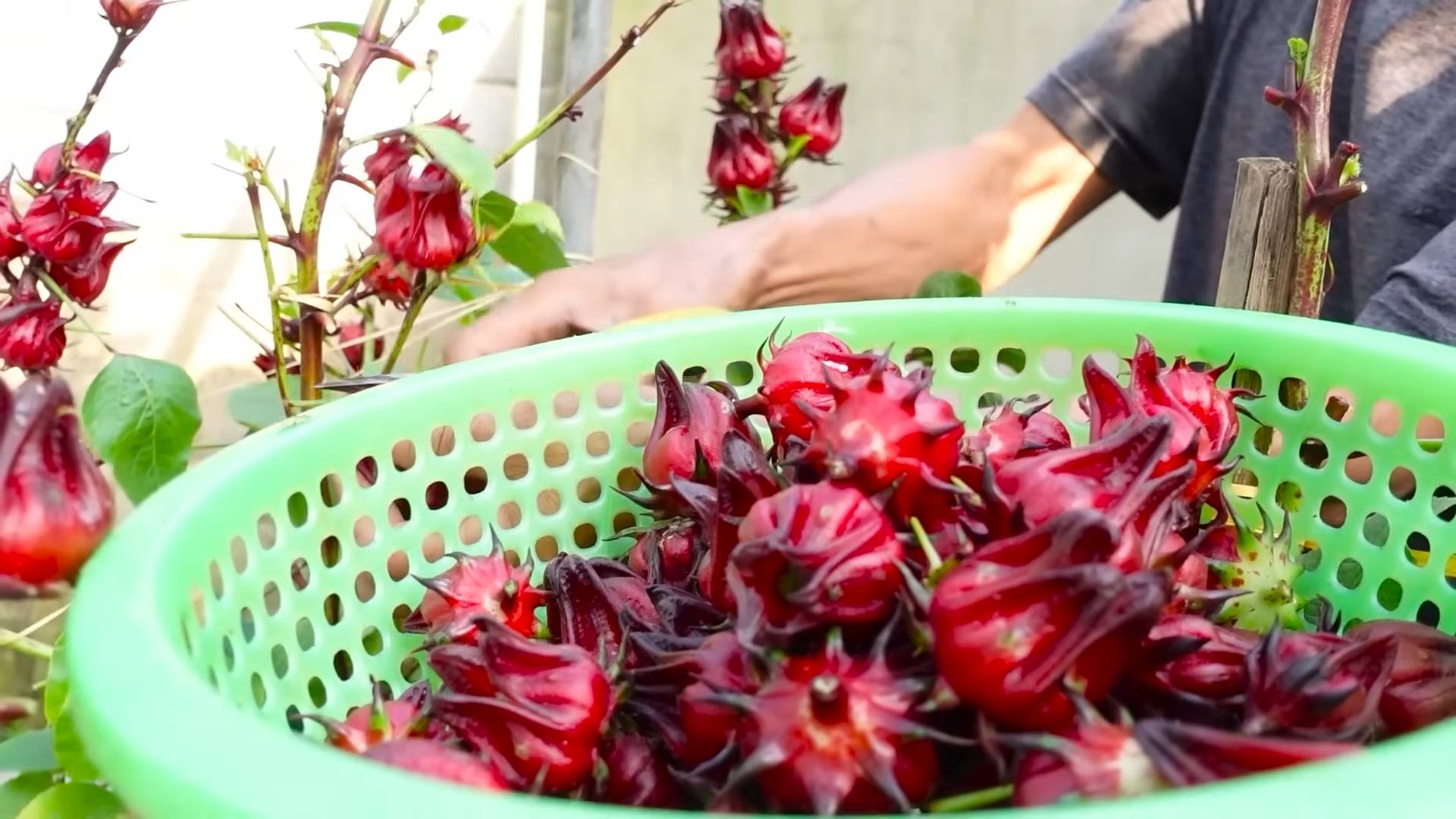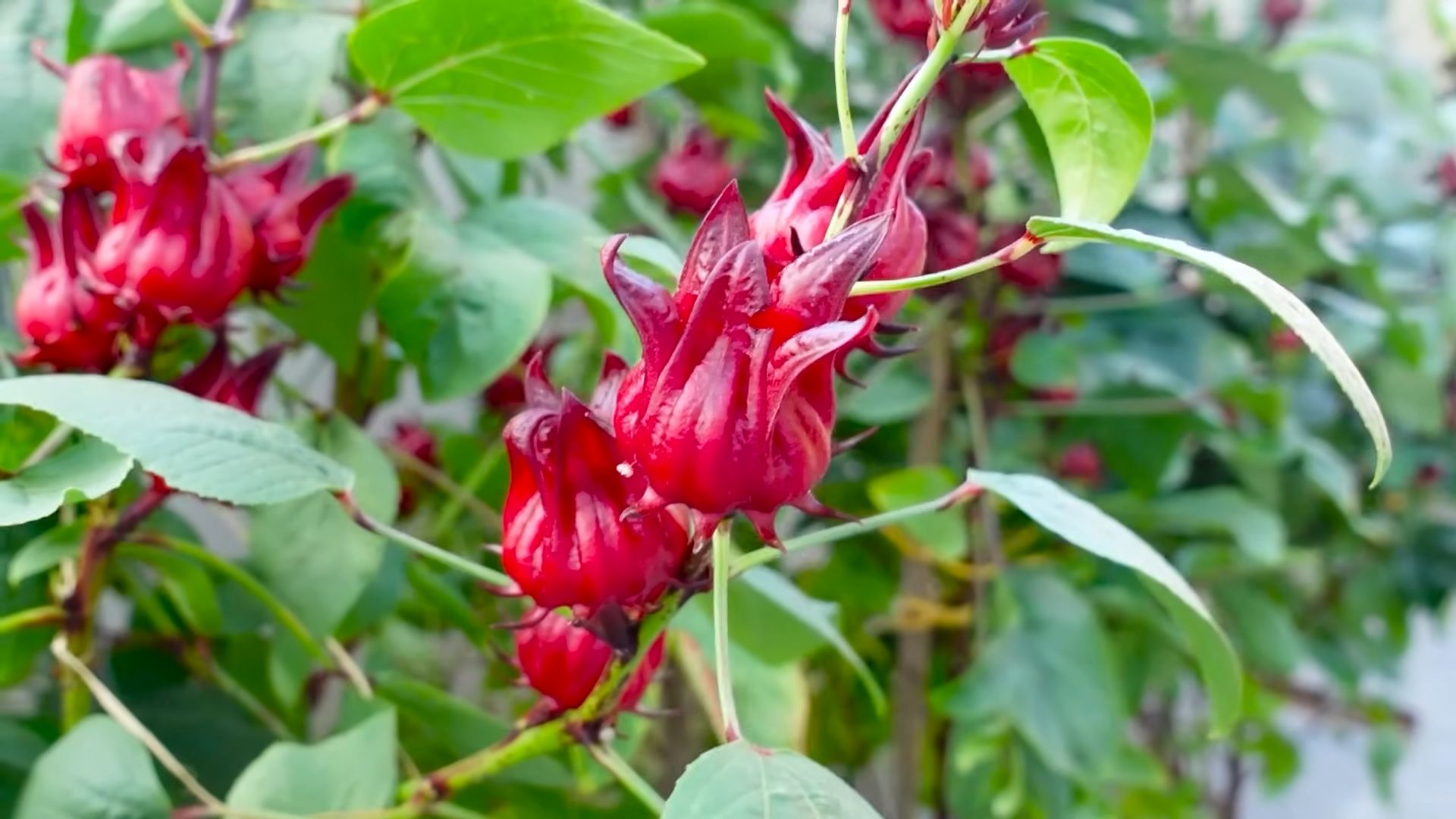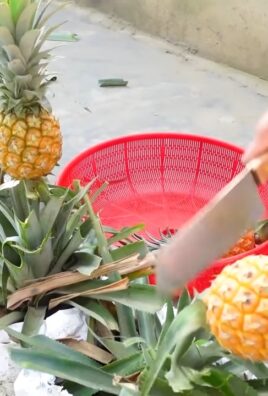Hibiscus Blooming Secrets: Unlocking a vibrant explosion of color in your own backyard is easier than you think! Have you ever admired those stunning hibiscus flowers, practically glowing with tropical beauty, and wondered how to achieve the same dazzling display at home? I know I have! For centuries, the hibiscus has been revered across cultures, from its use in traditional medicine in Asia to its symbolic representation of delicate beauty in Hawaii, where it’s the state flower.
But let’s face it, sometimes getting these beauties to bloom can feel like a frustrating mystery. You might be diligently watering and fertilizing, yet your hibiscus stubbornly refuses to produce those glorious blossoms. That’s where these DIY tricks and hacks come in! I’m going to share some simple, yet incredibly effective, methods to coax your hibiscus into a blooming frenzy.
Why do you need these secrets? Because a thriving, blooming hibiscus isn’t just a pretty plant; it’s a mood booster, a pollinator magnet, and a testament to your green thumb! Plus, mastering these Hibiscus Blooming Secrets will empower you to create a truly stunning garden that’s the envy of the neighborhood. So, get ready to ditch the guesswork and unlock the full potential of your hibiscus plants – let’s get started!

Unlocking Hibiscus Blooms: My DIY Secrets for a Flower-Filled Garden
Okay, hibiscus lovers, let’s talk about blooms! We all adore those vibrant, tropical flowers, but sometimes getting our hibiscus to actually *bloom* can feel like a real challenge. I’ve spent years experimenting, and I’m excited to share my tried-and-true DIY secrets for coaxing those gorgeous blossoms out. Get ready for a hibiscus explosion!
Understanding Your Hibiscus: The Foundation for Blooming Success
Before we dive into the DIY magic, let’s make sure we understand what our hibiscus needs to thrive. Think of it as building a strong foundation for a blooming empire!
* Sunlight is Key: Hibiscus are sun worshippers! They need at least 6 hours of direct sunlight each day to produce abundant blooms. Less sun equals fewer flowers, plain and simple.
* Watering Wisely: Overwatering is a common hibiscus killer. They like consistently moist soil, but not soggy. Let the top inch or two of soil dry out between waterings.
* Feeding Frenzy (the Right Way): Hibiscus are heavy feeders, but not all fertilizers are created equal. We need a fertilizer specifically formulated for hibiscus, with a higher middle number (phosphorus) to promote blooming.
* Pruning Power: Don’t be afraid to prune! Pruning encourages new growth, and new growth is where the flowers appear.
* Temperature Tango: Hibiscus are tropical plants, so they prefer warm temperatures. Protect them from frost and freezing temperatures.
DIY Hibiscus Bloom Booster: My Secret Recipe
This is where the real magic happens! I’ve developed a DIY bloom booster that’s packed with the nutrients hibiscus crave. It’s simple to make, affordable, and incredibly effective.
What You’ll Need:
* Epsom Salts (Magnesium Sulfate): 1 tablespoon per gallon of water
* Banana Peel Tea (Potassium Powerhouse): Made from 3-4 banana peels
* Bone Meal (Phosphorus Boost): 1 tablespoon per gallon of water (optional, but highly recommended)
* Watering Can or Bucket
Why These Ingredients?
* Epsom Salts: Magnesium is essential for chlorophyll production, which is crucial for photosynthesis and overall plant health. It also helps the plant absorb other nutrients more efficiently.
* Banana Peel Tea: Banana peels are rich in potassium, a vital nutrient for flower development. It encourages strong stems, vibrant colors, and abundant blooms.
* Bone Meal: Bone meal is a slow-release source of phosphorus, which is the star of the show when it comes to blooming. It promotes strong root development and abundant flower production.
Making the Banana Peel Tea: A Simple Brew
This is a super easy way to recycle those banana peels and give your hibiscus a potassium boost!
1. Collect Your Peels: Save the peels from 3-4 bananas. You can store them in a container in the freezer until you have enough.
2. Chop Them Up: Roughly chop the banana peels into smaller pieces. This helps them break down faster.
3. Soak in Water: Place the chopped peels in a jar or container and cover them with about 4 cups of water.
4. Let it Steep: Let the mixture steep for 2-3 days. The longer it steeps, the stronger the tea will be.
5. Strain and Use: Strain the liquid through a cheesecloth or fine-mesh sieve to remove the solids. The resulting liquid is your banana peel tea! Dilute it with equal parts water before using.
Applying the DIY Bloom Booster: Step-by-Step Instructions
Now that we have all our ingredients ready, let’s put it all together and give our hibiscus a blooming boost!
1. Combine Ingredients: In your watering can or bucket, add 1 tablespoon of Epsom salts and 1 tablespoon of bone meal (if using) per gallon of water.
2. Add Banana Peel Tea: Add the diluted banana peel tea to the mixture. Remember to dilute it with equal parts water first!
3. Stir Well: Stir the mixture thoroughly to ensure that all the ingredients are dissolved.
4. Water Your Hibiscus: Water your hibiscus with the bloom booster solution, making sure to saturate the soil around the base of the plant.
5. Frequency: I recommend applying this bloom booster every 2-3 weeks during the growing season (spring and summer).
Pruning for Peak Performance: Encouraging New Growth
Pruning might seem scary, but it’s essential for encouraging new growth and, therefore, more blooms!
* When to Prune: The best time to prune hibiscus is in late winter or early spring, before new growth begins.
* How to Prune: Use sharp, clean pruning shears. Remove any dead, damaged, or crossing branches. Also, prune back about one-third of the overall growth to encourage bushier growth and more flowering.
* Where to Cut: Make your cuts just above a node (the point where a leaf or branch grows from the stem). This will encourage new growth to emerge from that node.
Troubleshooting Common Hibiscus Problems: Addressing the Issues
Sometimes, even with the best care, our hibiscus might still struggle. Here are some common problems and how to fix them:
* Yellowing Leaves: This can be caused by overwatering, underwatering, nutrient deficiencies, or pests. Check the soil moisture, adjust your watering accordingly, and fertilize with a balanced fertilizer.
* Bud Drop: This is a frustrating problem where the flower buds fall off before they open. It can be caused by sudden changes in temperature, inconsistent watering, or pest infestations. Try to maintain consistent growing conditions and protect your hibiscus from extreme temperature fluctuations.
* Pests: Hibiscus are susceptible to pests like aphids, spider mites, and whiteflies. Inspect your plants regularly and treat any infestations promptly with insecticidal soap or neem oil.
Sunlight Optimization: Maximizing Exposure
As I mentioned earlier, sunlight is absolutely crucial for hibiscus blooms. If your hibiscus isn’t getting enough sun, you’ll need to find a way to increase its exposure.
* Relocate Your Plant: If your hibiscus is in a pot, move it to a sunnier location.
* Prune Overhanging Branches: If your hibiscus is planted in the ground, prune any overhanging branches that are blocking sunlight.
* Use Reflective Surfaces: You can use reflective surfaces, such as mirrors or white walls, to bounce sunlight onto your hibiscus.
Watering Techniques: Mastering the Moisture Balance
Watering is a delicate balance. Too much water can lead to root rot, while too little water can cause stress and prevent blooming.
* Check the Soil Moisture: Before watering, stick your finger into the soil to check the moisture level. If the top inch or two of soil is dry, it’s time to water.
* Water Deeply: When you water, water deeply enough to saturate the entire root ball.
* Avoid Overwatering: Make sure your pot has good drainage to prevent water from sitting around the roots.
* Water in the Morning: Water your hibiscus in the morning so that the foliage has time to dry before nightfall. This helps prevent fungal diseases.
Fertilizing Frequency and Types: Tailoring the Nutrients
Choosing the right fertilizer and applying it at the right frequency is essential for hibiscus blooms.
* Use a Hibiscus-Specific Fertilizer: Look for a fertilizer that’s specifically formulated for hibiscus. These fertilizers typically have a higher middle number (phosphorus) to promote blooming.
* Follow the Instructions: Always follow the instructions on the fertilizer label. Over-fertilizing can be just as harmful as under-fertilizing.
* Fertilize Regularly: Fertilize your hibiscus every 2-3 weeks during the growing season.
* Consider Slow-Release Fertilizers: Slow-release fertilizers can provide a steady supply of nutrients over a longer period of time.
Temperature Control: Creating the Ideal Climate
Hibiscus thrive in warm temperatures. If you live in a colder climate, you’ll need to take steps to protect your hibiscus from frost and freezing temperatures.
* Bring Potted Hibiscus Indoors: If your hibiscus is in a pot, bring it indoors when temperatures drop below 50°F (10°C).
* Protect In-Ground Hibiscus: If your hibiscus is planted in the ground, cover it with a frost blanket or burlap to protect it from frost.
* Provide Supplemental Heat: If you live in a very cold climate, you may need to provide supplemental heat to keep your hibiscus warm.
Pest and Disease Prevention: Staying Ahead of the Game
Preventing pests and diseases is always easier than treating them. Here are some tips for keeping your hibiscus healthy and pest-free:
* Inspect Your Plants Regularly: Check your hibiscus regularly for signs of pests or diseases.
* Maintain Good Air Circulation:

Conclusion
So, there you have it! Unlocking the secrets to abundant hibiscus blooms isn’t some mystical art; it’s a science you can master right in your own backyard. This DIY trick, focusing on creating the perfect, slightly acidic soil environment and providing the right nutrients at the right time, is a game-changer for anyone struggling to get their hibiscus to flower. We’ve demystified the process, breaking it down into simple, actionable steps that even beginner gardeners can follow with confidence.
Why is this a must-try? Because it works! Imagine your hibiscus, once a shy bloomer, now bursting with vibrant, show-stopping flowers. Think of the satisfaction of knowing you nurtured that beauty with your own hands, using a simple, cost-effective method. This isn’t just about aesthetics; it’s about understanding your plant’s needs and providing them in a way that promotes health and vitality. A healthy hibiscus is a happy hibiscus, and a happy hibiscus is one that rewards you with a profusion of blooms.
But don’t stop there! Experiment with variations to tailor the trick to your specific hibiscus variety and local climate. For example, if you live in an area with alkaline soil, you might need to amend it more aggressively with sulfur or peat moss. If you’re growing your hibiscus in a container, be sure to use a well-draining potting mix and fertilize more frequently, as nutrients can leach out more quickly. Consider adding a small amount of Epsom salts to the soil mix to provide magnesium, which is essential for chlorophyll production and overall plant health. You can also try different types of organic matter, such as composted leaves or aged manure, to enrich the soil and improve its structure. Remember to always test your soil pH to ensure it’s within the optimal range for hibiscus (around 6.0 to 6.5).
Furthermore, consider the impact of sunlight. While hibiscus love sunshine, intense afternoon sun in hotter climates can scorch the leaves. If you notice signs of sun stress, such as yellowing or browning leaves, consider providing some afternoon shade. Conversely, if your hibiscus isn’t getting enough sunlight, it may produce fewer blooms. Aim for at least six hours of direct sunlight per day for optimal flowering.
Finally, don’t forget the importance of proper watering. Hibiscus need consistent moisture, but they don’t like to sit in soggy soil. Water deeply whenever the top inch of soil feels dry to the touch. Avoid overwatering, as this can lead to root rot. During the dormant season, reduce watering frequency.
We are confident that this DIY trick will transform your hibiscus growing experience. It’s a simple, effective, and rewarding way to achieve the vibrant blooms you’ve always dreamed of. So, grab your gardening gloves, gather your supplies, and get ready to witness the magic of a thriving, flower-filled hibiscus.
Now, we want to hear from you! Try this DIY trick and share your results with us. Post pictures of your blooming hibiscus on social media using #HibiscusBloomingSecrets and tell us about your experience. What worked well for you? What challenges did you face? What variations did you try? Your feedback will help us refine this trick and make it even more effective for other hibiscus enthusiasts. Let’s create a community of hibiscus lovers who are passionate about sharing their knowledge and helping each other achieve gardening success. Your insights are invaluable, and we can’t wait to see your beautiful blooms! Let’s unlock those **Hibiscus Blooming Secrets** together!
Frequently Asked Questions (FAQ)
Q: What exactly makes this DIY trick so effective for hibiscus blooms?
A: The effectiveness of this DIY trick lies in its holistic approach to addressing the key factors that influence hibiscus flowering. First, it focuses on creating a slightly acidic soil environment, which is crucial for nutrient uptake. Hibiscus thrive in soil with a pH between 6.0 and 6.5, as this allows them to efficiently absorb essential nutrients like iron, which is vital for chlorophyll production and overall plant health. Second, the trick emphasizes providing the right nutrients at the right time. By using a balanced fertilizer with a higher phosphorus content (the middle number in the NPK ratio), you’re specifically targeting bloom development. Phosphorus is essential for flower formation and root growth. Third, the DIY aspect allows for customization based on your specific soil conditions and hibiscus variety. You can adjust the amendments and fertilizer ratios to meet the unique needs of your plants. Finally, the trick encourages consistent monitoring and adjustments, ensuring that your hibiscus receives the optimal care throughout the growing season.
Q: How often should I apply the acidic soil amendment and fertilizer?
A: The frequency of application depends on several factors, including the type of amendment and fertilizer you’re using, the size of your hibiscus plant, and the growing conditions. As a general guideline, you should amend the soil with sulfur or peat moss every few months to maintain the desired pH level. Regularly testing your soil pH is the best way to determine the frequency. For fertilizer, follow the instructions on the product label. Typically, a balanced fertilizer with a higher phosphorus content should be applied every 2-4 weeks during the growing season (spring and summer). Reduce the frequency during the dormant season (fall and winter). Remember to water thoroughly after applying fertilizer to prevent root burn. Organic fertilizers, such as compost tea or fish emulsion, can be applied more frequently, as they are less likely to cause nutrient imbalances. Always observe your plant for signs of nutrient deficiencies or excesses and adjust your feeding schedule accordingly.
Q: What if my hibiscus is already planted in the ground? Can I still use this trick?
A: Absolutely! This DIY trick can be adapted for hibiscus plants already established in the ground. The key is to focus on amending the soil around the plant’s root zone. Gently loosen the soil around the base of the hibiscus and incorporate sulfur or peat moss to lower the pH. Be careful not to damage the roots. You can also create a “fertilizer ring” around the plant by digging a shallow trench a few inches away from the stem and filling it with fertilizer. This will help ensure that the nutrients are delivered directly to the roots. Water thoroughly after applying the amendment and fertilizer. For larger, more established plants, you may need to use larger quantities of amendments and fertilizer. Monitor the plant’s response and adjust your approach as needed. Regular soil testing is especially important for in-ground hibiscus, as the soil pH and nutrient levels can fluctuate over time.
Q: My hibiscus is in a pot. Does this change anything?
A: Yes, growing hibiscus in a pot requires some adjustments to this DIY trick. Container-grown plants are more susceptible to nutrient deficiencies and pH imbalances because the soil volume is limited, and nutrients can leach out more quickly. Use a well-draining potting mix specifically formulated for acid-loving plants. Amend the potting mix with sulfur or peat moss to ensure the pH is within the optimal range. Fertilize more frequently than you would for in-ground plants, typically every 2-3 weeks during the growing season. Use a liquid fertilizer diluted to half strength to avoid over-fertilizing. Repot your hibiscus every 1-2 years to refresh the potting mix and prevent root-bound conditions. When repotting, choose a pot that is slightly larger than the previous one. Pay close attention to watering, as container-grown plants tend to dry out more quickly than in-ground plants. Ensure the pot has drainage holes to prevent waterlogging.
Q: What are some common signs that my hibiscus isn’t getting enough of the right nutrients?
A: Several visual cues can indicate nutrient deficiencies in hibiscus. Yellowing leaves, especially between the veins (interveinal chlorosis), can be a sign of iron deficiency, which is common in alkaline soils. Stunted growth and small, pale leaves can indicate a nitrogen deficiency. Poor flowering and weak root development can be a sign of phosphorus deficiency. Purple or reddish leaves can indicate a phosphorus deficiency, especially in cooler temperatures. Brown or scorched leaf edges can indicate a potassium deficiency. If you notice any of these symptoms, test your soil pH and nutrient levels and adjust your fertilization and amendment strategies accordingly. Remember that over-fertilizing can also cause problems, so it’s important to strike a balance.
Q: Can I use coffee grounds to acidify the soil for my hibiscus?
A: Yes, coffee grounds can be a helpful addition to your hibiscus care routine, but they shouldn’t be the sole method of acidifying the soil. Coffee grounds are slightly acidic and contain some nitrogen, which can benefit hibiscus. However, they also contain caffeine and other compounds that can inhibit plant growth if used in excess. To use coffee grounds safely, compost them first to break down the caffeine and other potentially harmful substances. Mix the composted coffee grounds into the soil around your hibiscus, or use them as a mulch. Avoid using fresh coffee grounds directly on the soil, as this can lead to nutrient imbalances and other problems. Remember to monitor your soil pH regularly and adjust your amendment strategy as needed.
Q: What if I don’t see results right away? How long does it take for this trick to work?
A: Patience is key! It can take several weeks or even months to see noticeable results from this DIY trick, depending on the condition of your hibiscus and the growing conditions. Don’t get discouraged if you don’t see blooms immediately. Continue to monitor your plant, adjust your care routine as needed, and be patient. Remember that hibiscus typically bloom during the warmer months, so you may




Leave a Comment